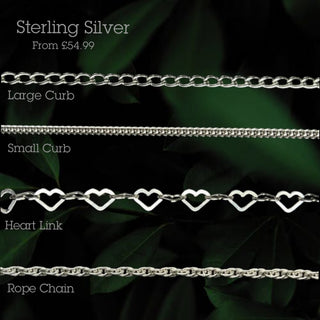Why does anodised piercing jewellery colour vary? and how to get the best anodising results?
How to get the best anodising results?
Material variations:
Different batches of Titanium alloy or Niobium can have slight differences in chemical composition, which may lead to variations in the oxide layer formed during anodising. This can give us different colours at the same voltage.
Jewellery Quality:
Imagine buying a cake but not knowing what the ingredients are. Would you eat it? The same principle applies to titanium jewellery. The terms "titanium" and "medical titanium" are often used, but what do they mean? Just like food ingredients, the quality and purity of the titanium used in jewellery are crucial. Medical-grade titanium, for example, refers to a specific type of titanium alloy that meets strict standards for biocompatibility and safety when used in the body, such as ASTM F136 or ASTM F-1295. These alloys are designed to minimise the risk of irritation or adverse reactions, ensuring that the material is safe for long-term contact with your skin.
So, just as you’d want to know what's in your cake before eating it, it’s essential to know what’s in your titanium jewellery to ensure it’s safe, reliable, and of the highest quality. Real genuine implant-grade jewellery can be proven with mill certificates. We DO NOT buy from companies that cannot prove what their jewellery is made from.
Anodising Colours:
Anodising, while an excellent process for creating durable and vibrant metal finishes, has certain colour limitations. Specifically, colours like red, orange, deep green, and black are not achievable through anodising alone. The anodising process typically results in a range of colours such as gold, yellow, bronze, and various shades of blue or purple, and even green depending on the type of metal and the process used. However, black is a special case—it can be achieved on niobium through a separate process involving heat and quenching, rather than anodizing itself. This method allows for the creation of a rich black finish on niobium, providing more colour options for those looking for deeper or more intense tones beyond what anodising can offer.
Anodised Jewellery Care:
When it comes to cleaning your titanium jewellery, don’t use polishes or cloths with abrasives and never use an ultrasonic cleaner. Bathe your jewellery in warm, soapy water with a pH-neutral soap for a few minutes, this will soften any crusties. You can also use a soft bristle baby toothbrush to gently clean around gems and stones before you rinse and pat or air dry. If care is taken you should not have to clean your jewellery more than once or twice a year.
Electrolyte bath consistency:
Even small variations in the anodising bath's temperature, chemical concentration, or agitation can affect the thickness and colour of the oxide layer or in our case colours.
Part placement and racking:
How parts are positioned and secured within the anodising tank can impact current distribution, leading to the uneven formation of the oxide layer unless this is what you are trying to achieve, as this can give us some fun colours and patterns.
Process time and voltage:
Small deviations in anodising time or the voltage applied can influence the final thickness of the oxide layer aka the colour of our titanium or niobium.
Painting process: When colour is added to the jewellery, variations in pattern and colour can be added with a modified paintbrush or covering parts of the piercing jewellery before immersion can create some amazing coloured pieces of jewellery.
How to minimise colour variations between batches:
Use consistent titanium alloy: Whenever possible, source jewellery from the same batch or alloy type to reduce material variations.
Strict quality control: Regularly monitor the anodising bath chemistry and temperature to maintain consistency.
Mirror polished titanium jewellery: What does mirror-polished jewellery mean? The aim is to smooth the surface to such a degree that it becomes completely flawless and reflective, giving it a glossy, almost mirror-like appearance. This process enhances the natural shine of the metal, resulting in a sleek, high-quality finish and with a bit of luck that elusive green that every piercer seeks at higher voltages.
Contact us
